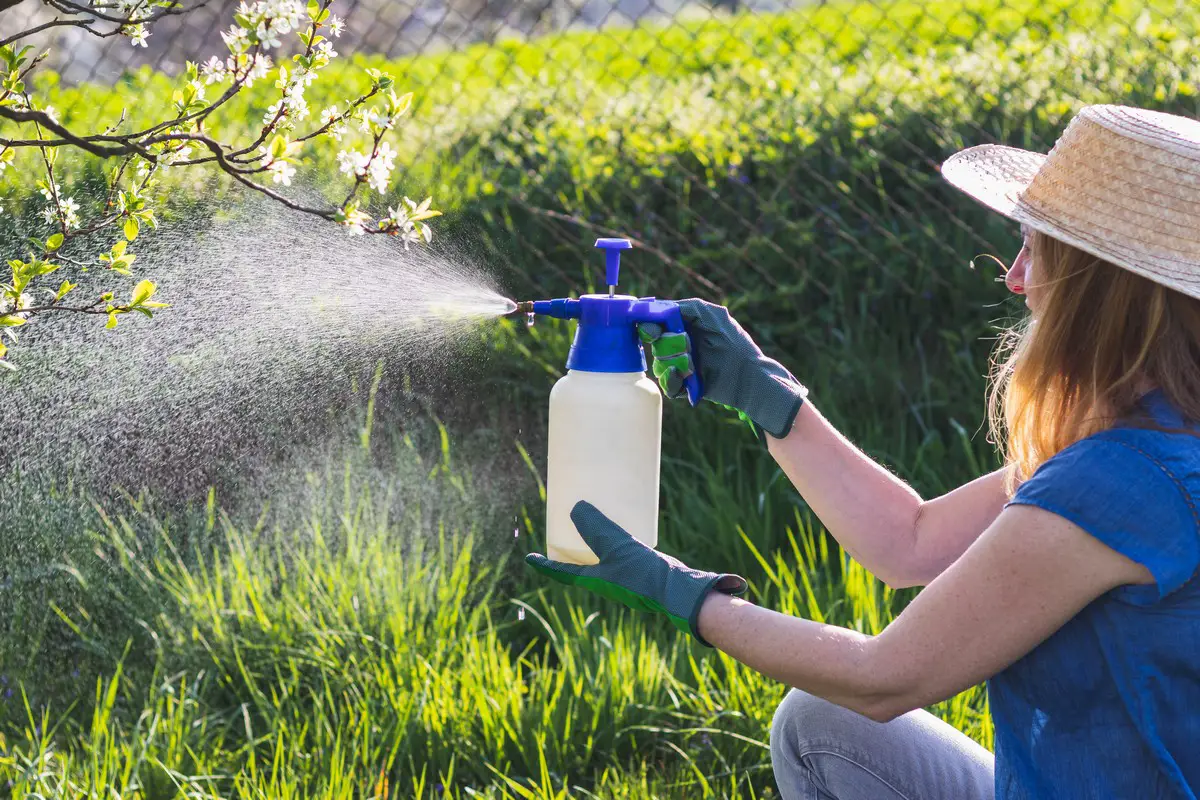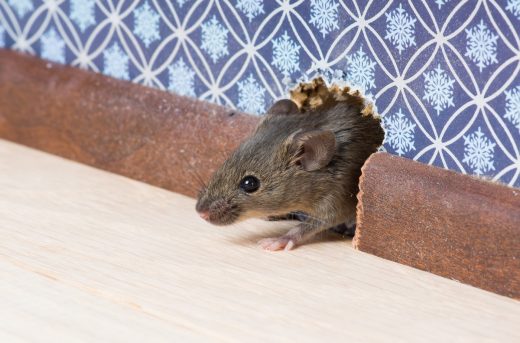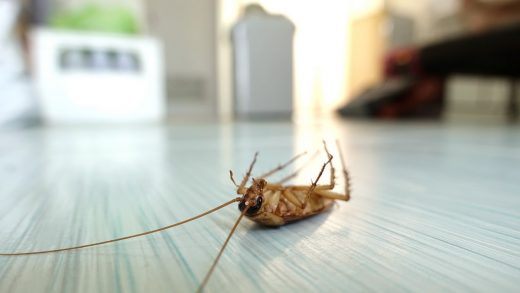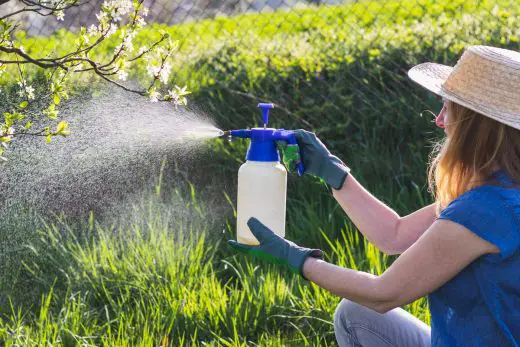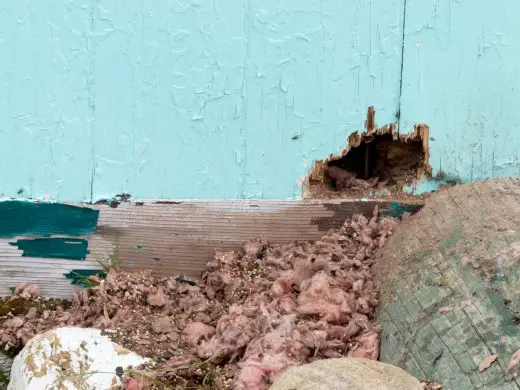8 property maintenance tips to prevent pests guide, House Tips, Building Design Online Advice
8 Property Maintenance Tips To Prevent Pests
14 Jun 2021
Pests can wreak havoc in your home or commercial building. Property owners know the immense pain of having little critters running around in their private spaces. Aside from the adverse impacts that bugs like ants and mosquitoes can have on your health, some, like termites, can also lead to structural damage.
Fortunately, there are things that you can do to prevent pests from plaguing your home. Here are some property maintenance tips that can help you:
-
Conduct routine inspections
As the adage goes, an ounce of prevention is worth a pound of cure. With this in mind, you should schedule regular inspections of your entire property so that you can spot early signs of pest problems and nip them in the bud.
To lighten the load, it’s better to inspect your property daily by ensuring that spills and debris in and around the house are cleaned up. Make sure to get into crevices, especially in between furniture and other fixtures. Look for holes in food packets stored in your pantry and cabinets. Empty the trash cans in various rooms into your main dumpster and keep them covered. Lastly, look for signs of leakage, such as puddles of water.
Specific rooms to monitor:
- Bathroom – Watch out for mold and mildew as well as loose and cracked tiles. Since the bathroom has the propensity for getting wet, make sure that any remnants of moisture arose from using the faucet or shower, not leaks.
- Kitchen – Kitchens are also areas that typically get wet easily. Check your appliances and fixtures, like dishwashers, sinks, and refrigerators, to ensure that they’re clean and dry. Countertops and drawers must also be free from moisture. Moreover, always store your food in sealed containers to avoid attracting pests.
- Attic – Leaks on the roof are most likely to affect your attic first since it’s the closest room. That’s why you have to keep an eye out for signs of damage, especially moisture and leaks since these can attract termites. If you find that these pests have already infiltrated your home, you may want to hire professionals to do termite treatment.
For weekly inspections, you must look around your property for holes and gaps. Watch out for vegetation that grew near the house. The primary problem with having shrubbery that touches your home is that it can lead to moisture, which can lead to rapid deterioration of your exterior and attract unwanted bugs. (1)
-
Exterminate as needed
It can be tiring to think about all the scrutinizing that you have to do on a daily and weekly basis. Nonetheless, think of the task as an investment to avoid damaging your property and decreasing its value.
Cockroaches, mice, rats, termites, and ants are five of the most common household pests. You might not think that you have this issue now, but just the smallest bait, like crumbs or water puddles, can trigger a full-on infestation. (2)
If ever you find any sign of these insects, contact pest control experts right away to avoid exacerbating the problem – see www.pestcontrolsanantonio.com. These little bugs may be easy to ignore, but you shouldn’t be complacent about the damage that they can bring to you and your property.
Some signs that indicate the presence of pests:
- Visibility – Even if you only see one cockroach, rat, or ant, it means that there’s already a colony waiting for them once they’ve scouted a food source. Again, don’t discount the fact that they’ve gained entry to your home.
- Droppings – Watch out for signs of urine and fecal waste on the floor or inside cabinets. The ones from rodents are easy to spot, but if you look closely, you may also find bug droppings.
- Chew marks – Rats are the most typical cause of chew marks, but ants also have the determination to gnaw through paper or even plastic wrappings, especially ones that haven’t been sealed properly.
- Termite tunnels – Termites create tunnels, also known as mud tubes, to connect their underground nests to food sources above ground. You can also find these over, under, or around concrete fixtures. They function similar to highways since termites can’t eat through soil or wood.
- Nests – Piles of debris and dust can serve as nests for these unwanted creatures. They’re particularly drawn to areas that are quiet, insulated, and humid, such as attics, crawl spaces, bathrooms, and kitchens.
- Rub marks – Rodents can leave behind rub marks after eating greasy leftovers neglected on your countertops or on open trash cans. Keep an eye out for oily residue.
- Noise – Gnawing, squeaking, or any sound that indicates movement can be a sign of pest presence. Listen to them, especially in walls, ceilings, and pantries.
- Odor – If you smell anything unpleasant inside cabinets or near furniture and appliances, it’s highly likely that there are unwanted critters inside your home.
-
Seal cracks and crevices immediately
Cracks and holes on the walls, ceilings, and roof can serve as entry points for pests to infiltrate your abode. Sealing these gaps must be done both outsides and inside your home.
For the exterior, check the visible foundation and ensure that there aren’t cracks on it. Gaps around the pipes and vents must also be inspected for signs of pests.
Walls facing outside and inside must be cleared of cracks. These can allow entry for moisture, which can lead to structural damage and provide hydration for termites and other creepy crawlies.
These are the different types of sealants that you can use for your house:
- Acrylic – The UV stability of acrylic sealants make it the best option for exterior application. Additionally, it’s not prone to shrinkage, so you can depend on them to seal cracks properly. However, they can be tricky to apply, so you should research thoroughly before using them.
- Butyl – Butyl sealants are highly affordable and can adhere to different materials. They aren’t recommended for construction applications that require something heavy-duty, though. Plus, their stringy consistency can make them challenging to use.
- Polysulfide – This flexible sealing solution can maintain its elasticity even in extreme temperatures. Just like its acrylic counterpart, it doesn’t shrink easily and also has UV stability. You can even use polysulfide sealants underwater.
- Polyurethane – This type is one of the most common variants in the market today. Its strong adhesion is its primary appeal, along with being resistant to abrasion and shears. It can also adhere to a wide array of materials and is easy to apply.
- Silicone – The main selling points of silicone sealants, which are the most expensive among the ones on this list, are their flexibility and durability. When you use this to seal cracks and holes, you can expect it to last up to 20 years. It does have the propensity to stain some substrates and attract dirt, though.
- Water-based latex – These are the safest and easiest to apply without compromising the strength of its adhesion. They’re best used for filling tiny gaps and voids in areas with minimal movement. It can also be used for waterproofing.
-
Reduce or eliminate standing water
As mentioned above, moisture can lead to structural damage and lure unwanted bugs into your sanctuary. Avoid these problems by getting rid of excess water on your property.
First, keep surfaces dry as much as possible. Throw away water in buckets, flower pots, wheelbarrows, planters, and kiddie pools. You don’t want mosquitoes to breed on your property. (3)
Check for leaks and damages to your plumbing, drainage, as well as heating, ventilation, and air conditioning (HVAC) system. Be on the lookout for signs of water damage, like discoloration or mold. Plus, make sure to ventilate areas that are prone to humidity, such as attics, basements, and crawl spaces.
-
Dispose of garbage properly
Household garbage, such as food scraps, packaging, and even bottles, can entice bugs into your home. Make sure that your indoor trash cans have tight-fitting lids to minimize the chances that ants, roaches, and flies can smell these food sources. Clean these containers as frequently as possible, too, to eliminate debris and spills entirely.
Aside from leftovers, yard waste can also be attractive to pests since they can be food sources or places for them to build their nests. Keep your outdoor space free of fallen leaves and branches.
-
Be mindful of your garden
On top of being a food source, trees and shrubbery can also serve as a way for bugs to enter your home. While mulch is a valuable material for boosting the fertility of your garden’s soil, it can attract pests into your property. If you can, use rubber mulch or stones, especially when placing this layer near your house’s foundation.
Trim leaves and branches that touch the surface of your home. Make sure to place bird feeders on the opposite end of your abode to keep little creatures away from your sanctuary. Lastly, try to grow plants that repel mosquitoes, like citronella, marigold, and horsemint, so that you have one fewer variety of insects to worry about.
If you want to do composting for your garden, there are actually ways that you can avoid pests from clamoring to eat the food waste that you’re storing. You must invest in a sturdy compost bin. It should have a tight-fitting lid so that insects and rodents can’t easily open it. Plus, it must be secure enough to stay closed even when it gets toppled over. It goes without saying that your compost must be far away from your home.
Aside from a secure compost bin, here are other ways to keep rats and other pests out of your garden:
- Bury food waste – Compost can seem like a feast for bugs because of the abundance of food waste on the pile. One way to frustrate these creatures is to dig a little deeper and bury any edible scrap. Then, cover them with grass clippings and leaves.
- Skip the scraps – If you really don’t want to bring pests into your property, you can skip incorporating food waste altogether. You can focus on fallen plants and manure to fertilize the soil.
- Clean recyclables before storing
If you plan to save time and energy from making multiple trips to your local recycling center, you should make sure to rinse your bottles and other recyclables well before storing them. Flavors and other residues can bring in hordes of unwanted bugs entice them to take up residence in your property. Moreover, make sure to keep your recycling bin outside and far away from your home instead of in the garage or storage room.
- Maintain your drains
Gunk and other waste can be found in your sink, and in the kind of floor drains found in kitchens, bathrooms, laundry rooms, and basements. Neglecting them can attract ants, roaches, mosquitoes, and even mice. Plus, the humid environment can be an ideal breeding ground for insect colonies.
With this in mind, make sure that you check your drains regularly and flush out all the food or organic particles. A safe way to do this is by using baking soda and vinegar. The foaming action that arises when mixing these two compounds can flush out clogs without exposing you to harmful chemicals that may be found in other commercial cleaners.
8 property maintenance tips to prevent pests Conclusion
Pests can be a huge problem for any property owner. Fortunately, there are practices that you can develop to prevent ants, roaches, termites, and other insects as well as rodents from plaguing your home.
First, you should conduct routine inspections to ensure that you can spot early signs of pest activity and nip them in the bud. If there are bugs in your home, make sure to exterminate them right at the start. Contact professionals for help since they have the skills and equipment to help you with the task.
Next, make sure to seal cracks and crevices properly. This is because gaps and holes on the foundation, along the walls, and on the roof can serve as ways for pests to enter your home.
Limit standing water on your property by ensuring you empty buckets, planters, and kiddie pools after it rains. Dispose of your garbage properly as well so as not to attract pests to your home. Clean your recyclables before storing or reusing them.
Furthermore, maintain your garden and ensure that no plant or shrubbery touches the surface of your home. Again, leaves and branches can serve as pest pathways to your residence. Lastly, clean out your drains regularly to wash out food particles.
8 property maintenance tips to prevent pests References
- “How Far Should Plants Be From A House? Read Before Planting”, Source: https://experthomereport.com/how-far-should-plants-be-from-a-house-read-before-planting/
- “5 Most Common Household Pests and How to Control Them”, Source: https://home.howstuffworks.com/5-most-common-household-pests.htm
- “How To Prevent Mosquitoes From Breeding On Your Property”, Source: https://www.mosquitomagnet.com/articles/how-to-prevent-mosquitoes-from-breeding-on-your-property
Comments on this guide to 8 property maintenance tips to prevent pests help article are welcome.
Building Articles
Residential Architecture
Pest Infestation Articles
Pest Infestations
How to Deal With Pest Infestation
6 Reasons Why You Need Pest Control Services?
4 benefits of seeking pest control services
Pest control prevention steps building homes
Comments / photos for the 8 property maintenance tips to prevent pests advice page welcome

